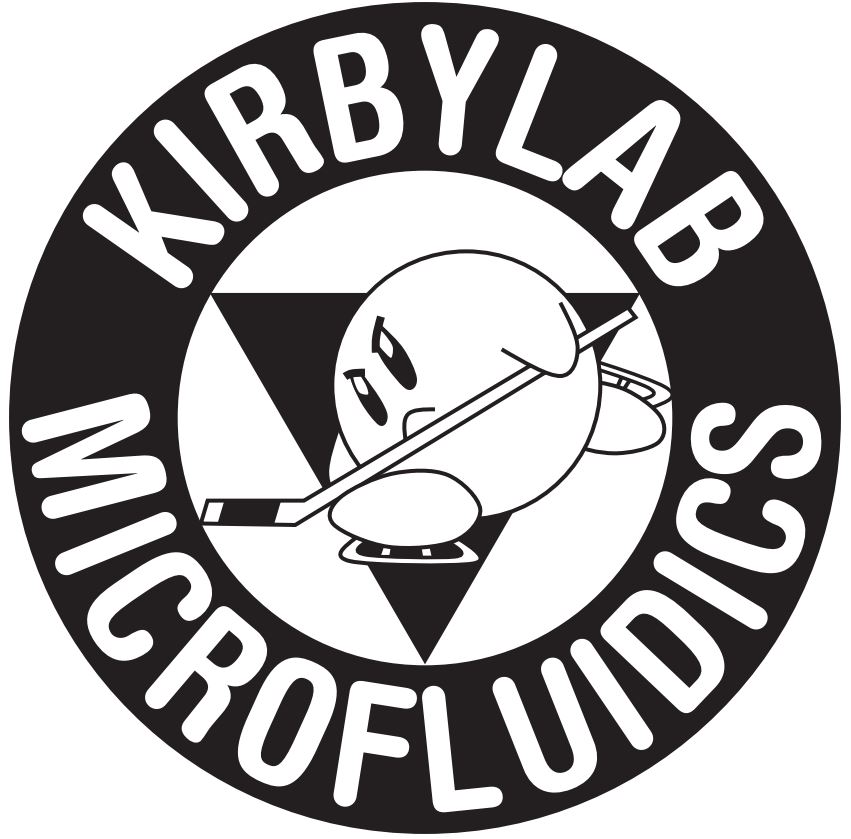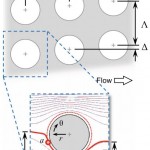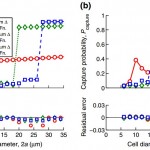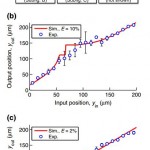Biomedical Microdevices, 2015: A Transfer Function Approach for Predicting Rare Cell Capture Microdevice Performance
Citation: Smith JP, Kirby BJ. A Transfer Function Approach for Predicting Rare Cell Capture Microdevice Performance, Biomedical Microdevices (2015) 17: 53. doi pdf
Abstract: Rare cells have the potential to improve our understanding of biological systems and the treatment of a variety of diseases; each of those applications requires a different balance of throughput, capture efficiency, and sample purity. Those challenges, coupled with the limited availability of patient samples and the costs of repeated design iterations, motivate the need for a robust set of engineering tools to optimize application-specific geometries. Here, we present a transfer function approach for predicting rare cell capture in microfluidic obstacle arrays. Existing computational fluid dynamics (CFD) tools are limited to simulating a subset of these arrays, owing to computational costs; a transfer function leverages the deterministic nature of cell transport in these arrays, extending limited CFD simulations into larger, more complicated geometries. We show that the transfer function approximation matches a full CFD simulation within 1.34 %, at a 74-fold reduction in computational cost. Taking advantage of these computational savings, we apply the transfer function simulations to simulate reversing array geometries that generate a notch filter effect, reducing the collision frequency of cells outside of a specified diameter range. We adapt the transfer function to study the effect of off-design boundary conditions (such as a clogged inlet in a microdevice) on overall performance. Finally, we have validated the transfer function’s predictions for lateral displacement within the array using particle tracking and polystyrene beads in a microdevice.
Figures:
- Fig. 1 A two-dimensional array of cylindrical obstacles in a microfluidic device generates size-dependent cell transport. doi pdf
- Fig. 2 A transfer function can be calculated using a limited CFD and particle advection simulation of one unit structure, then applied iteratively to simulate an arbitrarily large obstacle array device. Output position, collision status and shear history, and thus the probability of capture for a given cell type are deterministic functions of a cell’s input position in the high Peclet number regime where most obstacle array microdevices operate. doi pdf
- Fig. 3 The transfer function model (symbols) closely agrees with the full CFD simulation (lines) for both (a) collision frequency and (b) capture probability using LNCaP prostate cancer cells and a device with N = 100 unit structures for a range of offsets. doi pdf
- Fig. 4 The transfer function model allows for the computationally efficient simulation of reversals in the offset direction, which lead to a notch filter effect, reducing the collision frequency for small and large cells. doi pdf
- Fig. 5 (a) Off-design boundary conditions, such as from a clogged inlet channel or a lump of captured cells near the inlet, can lead to a transverse velocity error; this additional velocity component alters trajectories within the array. doi pdf
- Fig. 6 (a) Particle tracking experiments and comparison to simulated transfer functions for various transverse errors allow for the quantification of error along the length of the obstacle array, shown in a planview schematic here. doi pdf







